Australian 20 cents coin varieties
Specifications
Mint
Canberra, London
Mintage
28,223,000, 30,000,000
Alloy
Copper-Nickel (75%Cu, 25% Ni)
Diameter
28.5mm (1 1/8")
Weight 11.3g
(2/5 oz)
The copper-nickel 20c coin was a direct replacement for the florin and as such had the same diameter and weight as its predecessor although the metal from which it was struck was as different as the design. The odd metric size and weight are a consequence of the imperial specifications to which the florin was minted.
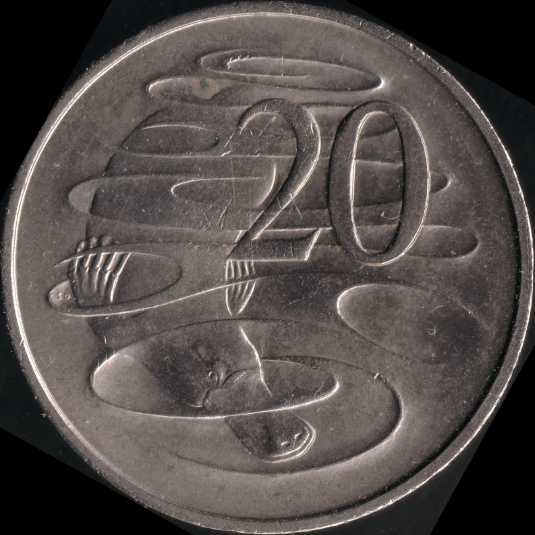
Reverse of 1966 20c coin
The 1966 20c coin occurs in three documented varieties. The Canberra and London strikes are distinguishable by the size of the gap between the platypus's head and the stylistic swirl of water which comes to a point near the platypus's (hidden) left eye. The Canberra coins have a very noticeable gap whereas the London coins have a very small or non-existent gap. The London coins themselves occur in two varieties. The standard coin has a flat top to the baseline of the 2 just as on the Canberra coins but a rare variety has a curved top to the baseline. The three varieties are illustrated below.
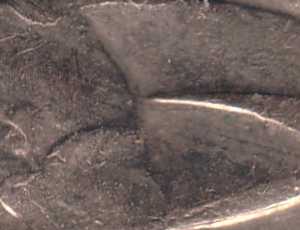
Royal Australian Mint, Canberra. Note the significant gap between the platypus's
head and the swirl.
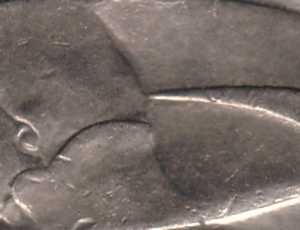
Royal Mint, Tower Hill, London. The swirl comes right up to the platypus's head.
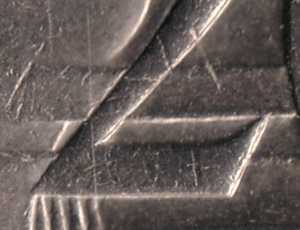
Normal baseline. All coins struck in Canberra and most of those struck in London are like this
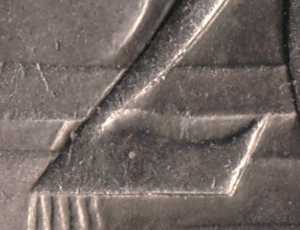
Wavy baseline. Rare. Occurs on a few coins from London, probably the product of
a single working die. Note that the down stroke of the 2 is thinner near the baseline
than that on the normal 2. Also note that the curvature of the baseline of the 2
is mirrored in a curvature of the aquatic swirl immediately above.
The wavy-baseline coin is very weird. The contour of the top of the baseline is reflected in the swirl above. It is as though a weakly-formed working die has been touched up with a miniature grinder.
Other Australian coins varieties
Mintmark variations of the 1942 San Francisco florin
Letter-shape variations of George V pennies

